Curriculum Assessment
English Assessment
Each unit in our teaching sequences starts with an elicitation task or 'cold task'. This is clearly marked with a blue border. This shows teachers what knowledge and skills children already possess. It is used to inform planning, devise fluid groupings, and set targets. •
Green: This is a new or unknown concept or skill. The child needs more practice.
Blue: The child is demonstrating a secure grasp of this skill or substantive knowledge.
Pink: The child is able to confidently demonstrate or explain this knowledge or skill and can apply this to other contexts.
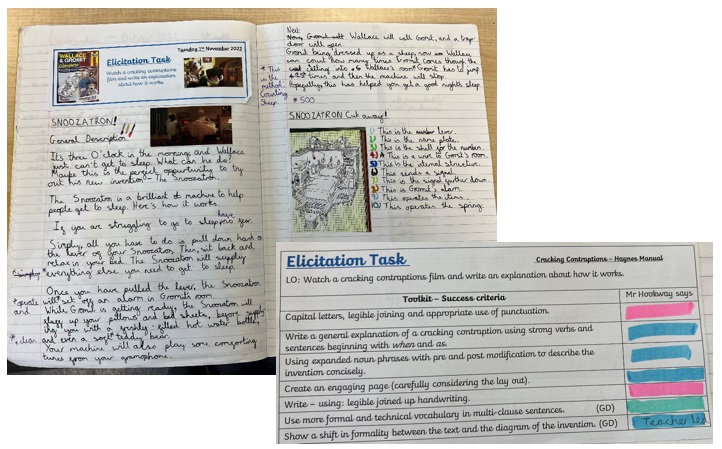
Through the unit teachers plan and teach lessons focused on the children's needs. The final piece or ‘hot task’ is marked with a pink border. Assessment sheets are completed and positive feedback given!
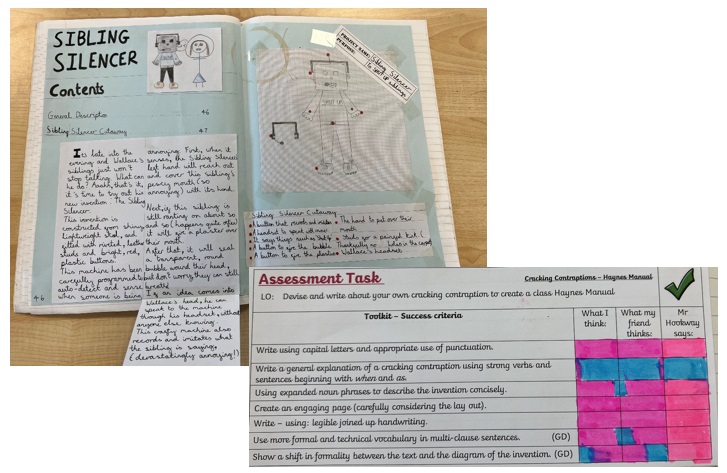
Maths Assessment
Each mathematics unit starts with an elicitation task, which is used to inform planning, devise fluid groupings, and identify pupils in need of pre-teach/intervention.
The elicitation has a blue border and includes colour-coded table of objectives.
Green: This is a new or unknown concept or skill. The child needs more practice.
Blue: The child is demonstrating a secure grasp of this skill or substantive knowledge.
Pink: The child is able to confidently demonstrate or explain this knowledge or skill and can apply this to other contexts.
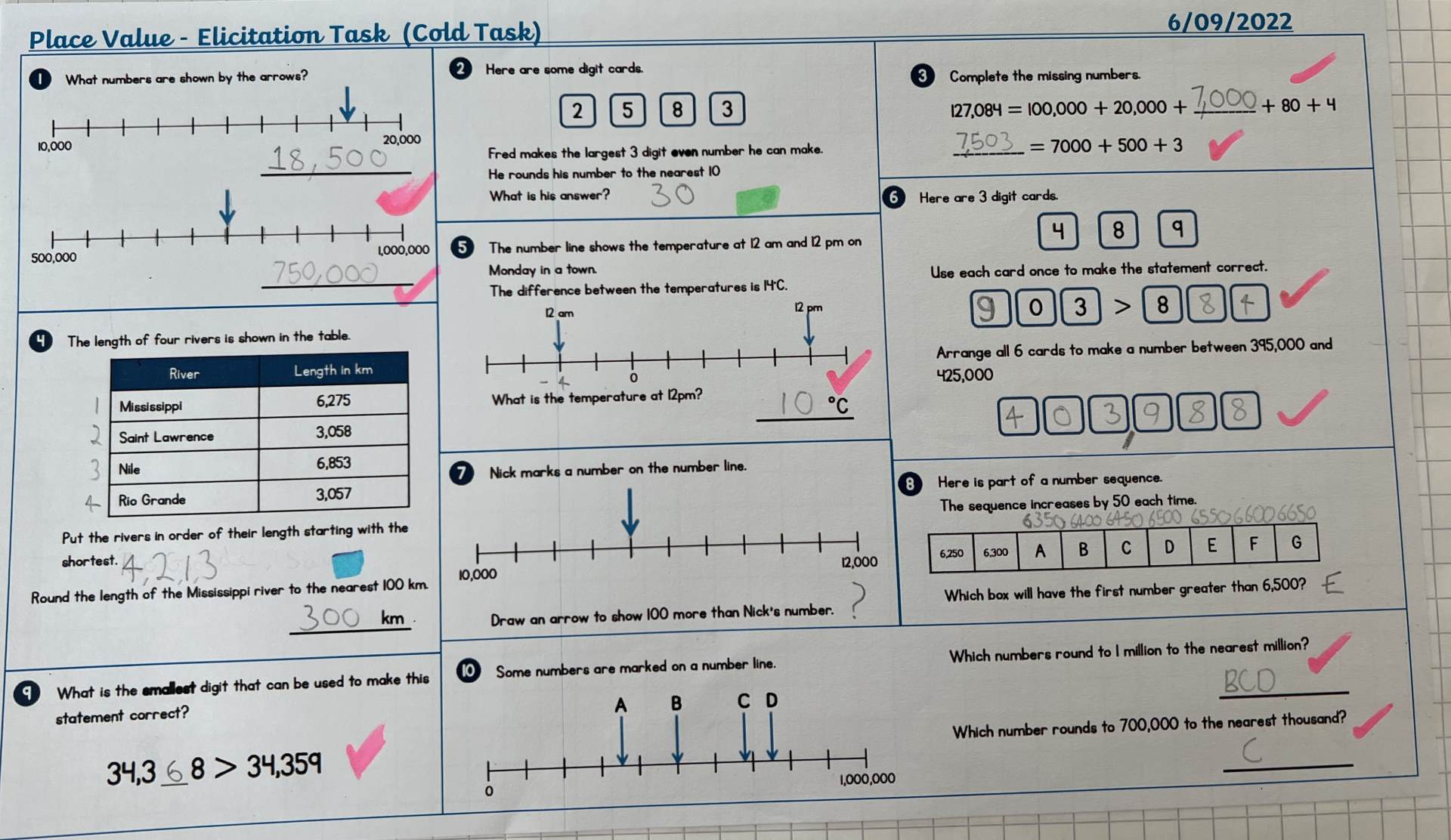
Through the maths unit teachers plan and teach lessons focused on the children's needs linked to the content of the elicitation task. The final piece or assessment task is marked with a pink border. Assessment sheets are completed and children's progress is carefully tracked.
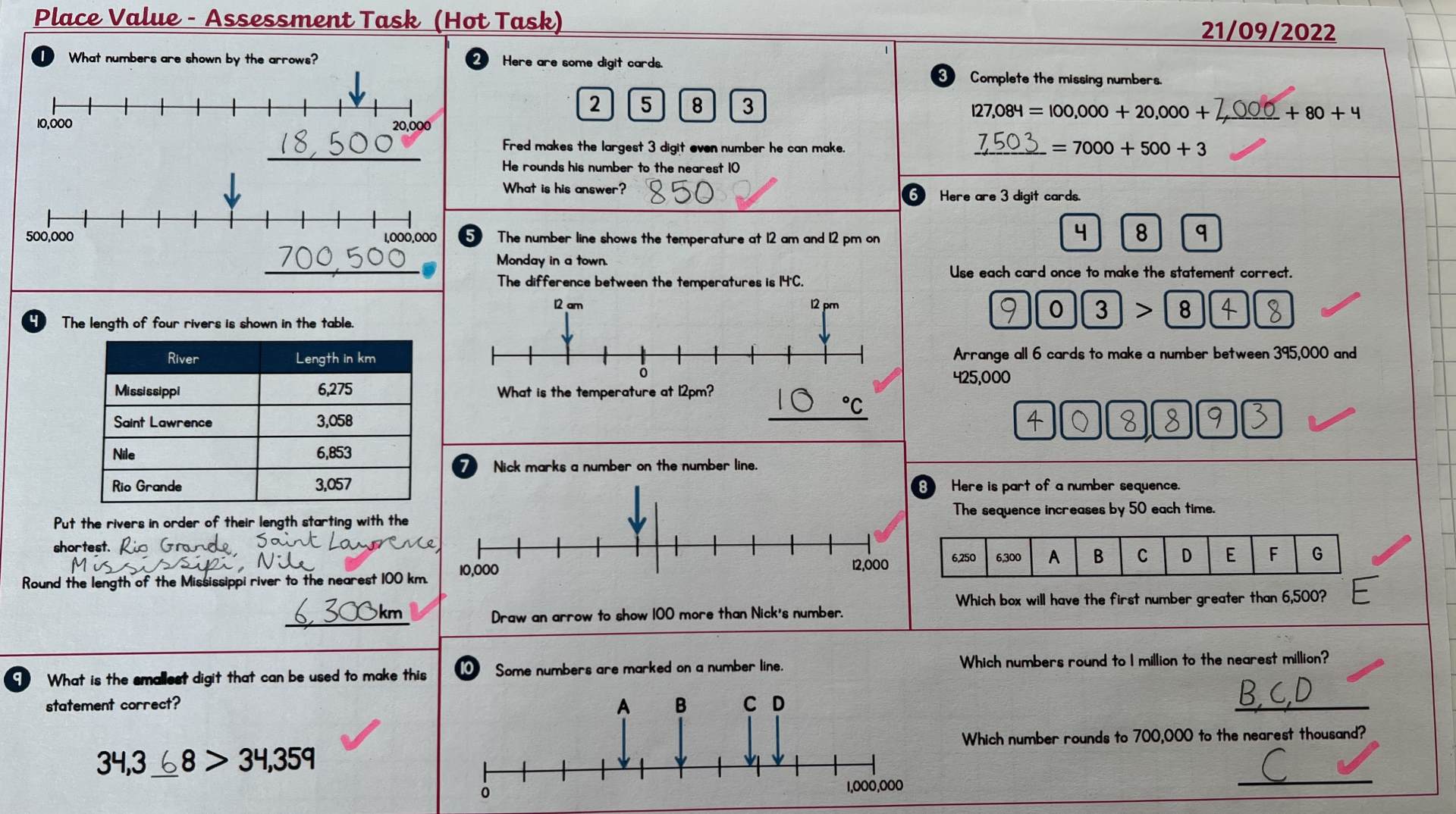
Assessment Grid for Place Value:
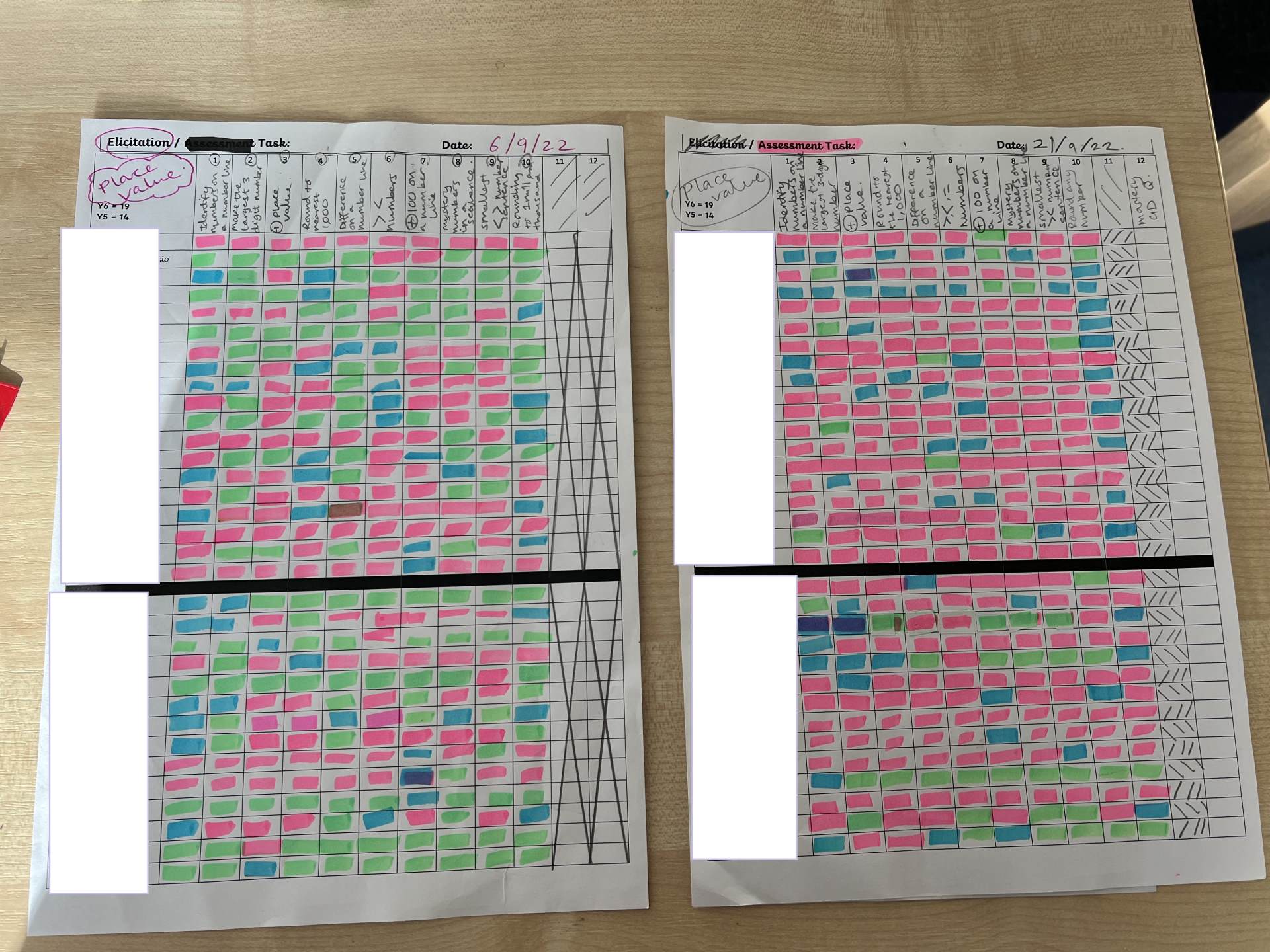
Teachers use assessment tracking grids to show progress and identify further areas for support. Primarily, they use this information to adapt teaching sequences to the needs of the class. Those children highlighted green will spend more time on small step targets linked to their maths unit, whereas children highlighted blue and pink will be given deeper thinking tasks which extend their learning.
Where possible, teachers provide immediate feedback through live/peer/self marking in the moment. When verbal feedback is given changes or edits are evident in purple pen. LOs are highlighted (green, blue, pink) to show understanding.
Teachers use pre-unit elicitations, diagnostic tasks within lessons, and highlighted LOs to identify pupils who require an additional pre-teach or pick-up. This helps children to keep up rather than catch up. Numberstacks is used to provide additional intervention following elicitation.
Wider Curriculum Assessment
Planning in the wider curriculum identifies key substantive and disciplinary knowledge and breaks the learning down into small steps. These can be seen on the unit cover pages, and on classroom working walls for geography, history and science.

For every geography, history and science unit, a front cover page is stuck into the children's books. It contains key information about the topic as well as the skills and knowledge which will be covered during the unit.
The front cover also details the learning questions and these form the basis for each lesson and help answer the overarching 'big question' for the unit.
These questions are specially crafted from our 'golden threads' which are key themes running through all of the geography, history and science topics throughout the school. This ensures that skills and knowledge are built on sequentially and through careful retrieval practice techniques, we can ensure that children learn more and retain more.
Each unit's learning is broken down into small steps as seen above, each focusing on the component knowledge and skills intended for the unit. These teaching sequences build towards a composite task, where children can showcase their new learning.
At the end of a unit, children self assess against the intended knowledge and skills shown on the cover pages. Through child conferencing, teachers check that children are secure in this knowledge. Teachers then complete their assessment.
Green: This is a new or unknown concept or skill. The child needs more practice.
Blue: The child is demonstrating a secure grasp of this skill or substantive knowledge.
Pink: The child is able to confidently demonstrate or explain this knowledge or skill and can apply this to other contexts.
In PE and sport, we utilise technology to record final compositions and routines for dance and gymnastics, as well as core components of striking and fielding and invasion games. These videos are played back to the children to look at the progress which has been made over the course of the PE block/unit.
The video below is taken from a final gymnastics routine from children in year 5 and 6. Using the physical education skills and knowledge progression document found here, we were able to identify progress made during this unit and share this with the children.
/i/video/Class_4_Gymnastics_Routine_AdobeExpress__1___1_.mp4
 Exe Valley
Exe Valley